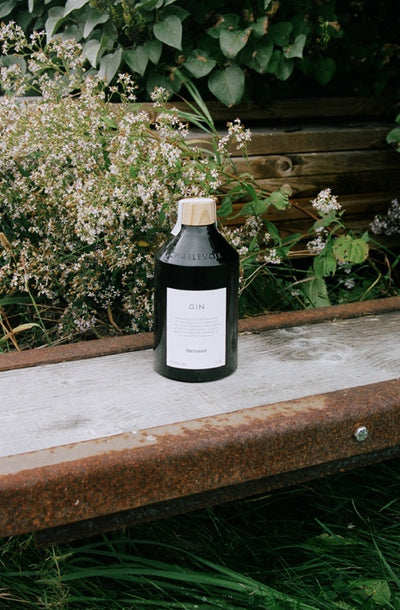Are you old enough to drink alcohol?




The desire to distill spirits inspired by our terroir, its aromas, its flora.
This core tenet of ours is completely at odds with purchasing a neutral alcohol produced elsewhere. We wanted our recipes to be built based on grains grown in our own region, varying with each harvest.
In other words, we wanted our identity to be one that is first and foremost a distiller. Our goal was to develop and oversee the entire production process ourselves. We knew the project was a major undertaking – producing your own neutral alcohol is an immense financial and technical challenge because it requires more equipment, suppliers, expertise, and most importantly, time.

There were many ingredients with fermentable sugars we could have chosen for our refined spirits: grains, fruit, potatoes, corn, etc. After experimenting with a few options (we even tried fava beans!), we settled on wheat for its bready and silky texture. We also picked rye for its hints of spice.
Every spirit we produce starts its journey in the fields of Isle-aux-Coudres, where the Harvey farm oversees crops that are caressed by the salty breeze of the St. Lawrence.


Once harvested, the iodized coarse grains are transported to our distillery. First, the wheat and rye are ground in a hammer mill and then make their way to the mash tun where they are mixed with water from the Malbaie River. This produces a “grain juice” which is also known as “wort”. The liquid is cooled and sent to the fermenters where it will remain for three to five days.
During fermentation, micro-organisms absorb most of the sugars contained in the wort and turn them into chemical compounds such as ethanol, methanol, acetone, CO2, etc. In other words, this is when a sugary liquid turns into an alcohol wort with its very own flavour profile.


With the liquid extracted from the fermenters, the stripping run can begin. This occurs in our 5,000-litre still. The mixture has an ABV of about 10 to 12% and will be heated to the boiling point – generally around 91°C depending on the molecules.
The alcohol vapours are collected near the top part of the still and then travel to condenser tubes that are filled with cold water. This step liquifies the vapours. It takes 4,000 litres of wort and eight hours to produce 1,000 litres of a liquid that has an ABV of 35%.
Because we always strive to obtain a purer distillate, this liquid then begins the polish run. To this end, we use a rectification column still with 20 plates. Each of these plates creates a reflux that traps the alcohol vapours and increases their concentration.
This is a very important step for the distiller. Out of the three stages of the distillate off the still (heads, heart, tails), only one is important: the heart. The heads are high in methanol while the tails contain fusel alcohols. These are reused for a second-generation distillation.
It takes eight days for our distillers to transform raw materials into our base alcohol which has an ABV of 96%. This blank canvas with subtle flavours is the basis of all our spirits.
